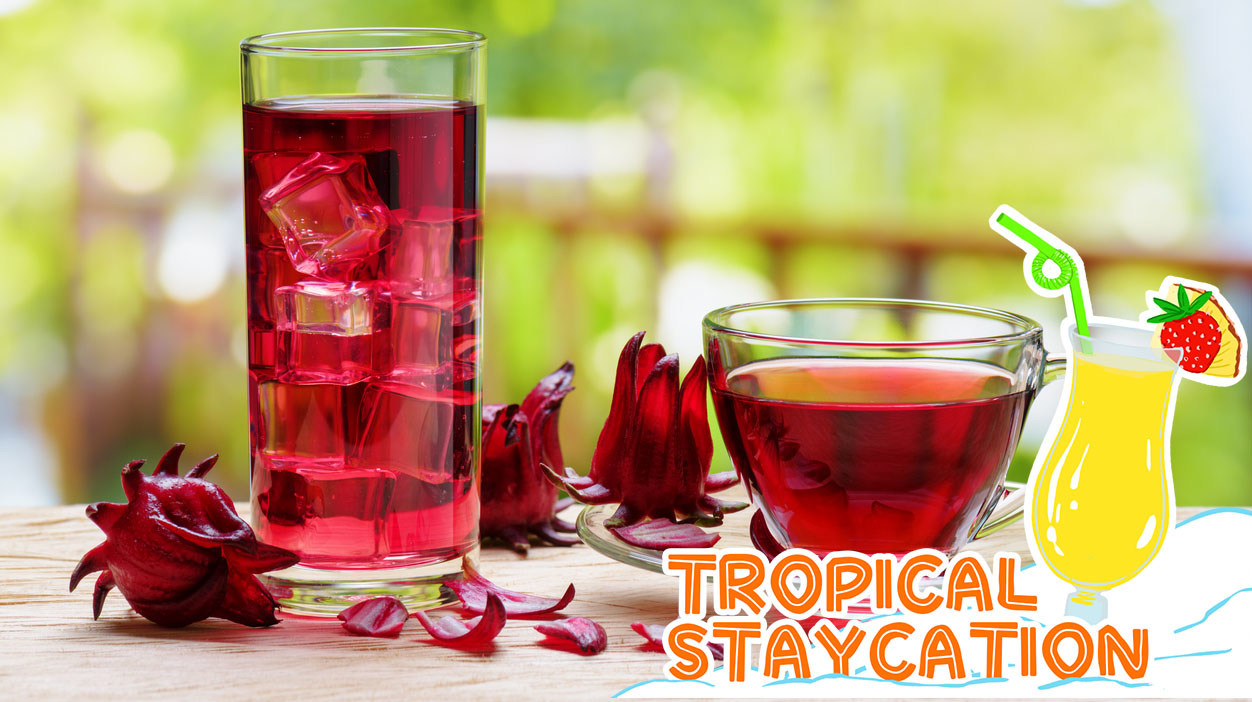Crimson Crush: Sorrel Is The Ultimate Tropical Tisane
It's the dead of winter, and most of the fun holidays are behind us—but there's still months of cold and slush to get through. So we'd like to welcome you to Tropical Staycation, a week of island-inspired recipes and other stories that will transport you to much warmer, sunnier places. Just don't look out the window while reading.
For a lot of travelers, island life is synonymous with sipping fruity cocktails like piña coladas and mojitos, however accurate or inaccurate that may be. I love festive rum-based drinks too, but for me, nothing conjures up tropical breezes more than a ruby-colored glass of sorrel. The tangy and spicy flavor reminds me of spending hot, sunny days lounging under a seagrape tree. Made from the sepals of the hibiscus plant, sorrel is traditionally mixed with sugar, ginger, cloves, and cinnamon. Sometimes, orange peel and pimento seeds are added for an extra kick. All across the Caribbean, sorrel represents Christmas festivities (with rum mixed in), but it's enjoyed all year round. The drink has many names around the world—bissap, sobolo, zobo, agua de Jamaica—but no matter where I've sipped sorrel, it always inspires warmth and sunny spirits.
I have been drinking sorrel for so long that I can't remember the first time I tasted it. I just know that I was immediately attracted to the vibrant red color and zingy flavor. I like my drinks like I like my clothes: bold and punchy. (I've even been known to use deeply hued drinks as accessories to my outfit when I'm out at bars, but we won't delve into that craziness here.) My most lasting impression of swigging sorrel is, of course, in Jamaica, with plates of peppery escoveitched red snapper. But I have sipped this refreshing beverage anywhere I've found it: on a beach in Puerto Vallarta, in a cafe in Chicago, on a sunny porch in Tobago. I've enjoyed sorrel all over the Americas, but it wasn't until I traveled to West Africa that I discovered that the plant behind "agua de Jamaica" actually originated in Ghana.
I was walking down a sun-scorched road in Accra when my Ghanaian friend suggested that we stop for a drink. He showed me several different bottles in a roadside shop and I (predictably) picked the one filled with a bright red liquid. He told me it was sobolo, but I didn't know what it was. Or at least not until the spicy flavor hit my tongue. I laughed and explained that this was sorrel, a Caribbean drink. He gave me a puzzled look and said that, no, it was sobolo, an African drink. Women soak the plant and make batches of it to sell as a thirst quencher throughout the day. It's popular throughout the region and called bissap in Senegal, Mali, and Burkina Faso; in Nigeria, it's zobo. The hibiscus flower is native to West Africa and it has been used as a cooling drink for centuries.
Today West African descendants have made the drink from the hibiscus sepal a popular libation everywhere, but especially in Jamaica, where it's so integral that hibiscus is called flor de Jamaica (pronounced ha-mīka) all over Latin America. Before agricultural advances and a shift in cultivation practices turned sorrel into a year-round crop, the sepals would ripen in November, just in time for Christmas festivities. Every household would steep the sepals and add its own spice blend and rum mixture. A nonalcoholic version would also be stored for the children.
Today, sorrel is made commercially and bottled for enjoyment all year round (Grace Foods makes a good non-alchoholic version), but there's nothing like the freshly prepared kind: steep hibiscus tea, add spices, and then refrigerate. However you drink it, sorrel is guaranteed to conjure up sunny days.
